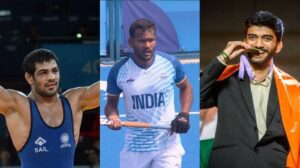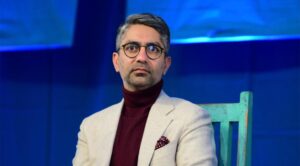
Have you wondered why athletes cut from the same cloth emerge from the same state? Why are Viswanathan Anand, R Praggnanandhaa, D Gukesh, Aravinth Chidambaram and even India’s first female Grandmaster in chess, Subbaraman Vijaylakshmi, all from Tamil Nadu? PV Sindhu, Saina Nehwal, Kidambi Srikanth, B Sai Praneeth, Jwala Gutta, N Sikki Reddy, and Satwiksairaj Rankireddy are all notable badminton players from Andhra Pradesh and Telengana. Odisha and Jharkhand produce hockey players like Dilip Tirkey, Birendra Lakra, Deep Grace Ekka, Lilima Minz, Jaipal Singh, Vimal Lakra, and Manohar Topno. PT Usha, MD Valsamma, Shiny Wilson, Anju Bobby George, Amoj Jacob, Alex Antony and now Murali Shreeshankar all athletics stars from Kerala.
You can broadly cluster our states by primary sport as well. Boxing in Assam, Manipur and Uttarakhand, Archery in Arunachal and Chattisgarh, Wrestling in Bihar and Haryana, Shooting in Maharashtra and Madhya Pradesh, hockey in Odisha, Jharkhand and Punjab, Chess in Tamil Nadu, Badminton in Andhra and Telengana, Football in Goa, Kerala and West Bengal.
There are four primary reasons for this:
- Heroes produce Heroes. Usha and Anand are prime examples of stalwarts who have inspired a lineage in their discipline and will continue to do so. In recent times, the same can be said of Abhinav Bindra, Mary Kom, and Pullela Anand’s rise in the late 1980s inspired a generation. His success led to chess being introduced in schools and a surge of tournaments in Chennai. Mary Kom’s Olympic and World Championship medals made boxing a respectable, aspirational sport for both girls and boys.
- Institutions provide an assembly line of talent. Ludhiana Basketball Academy in Punjab courted tall rural youth, trained them with elite coaching, producing NBA draftee Satnam Singh and multiple Indian internationals. The Pullela Gopichand Badminton Academy in Telangana blended world-class facilities with scientific fitness and nutrition programs. The PT Usha School of Athletics in Kerala focused on female track athletes, producing medalists at national and Asian level. The Prakash Padukone Badminton Academy in Karnataka developed All England champions and Olympic medalists. Shooting ranges set up in Delhi, Haryana and Maharashtra have helped produce many young shooters from these states.
For More Exciting Articles: Follow RevSportz

- Monetary and Career Incentives are a big driver. Haryana provides cash awards for Olympic medal winners, as also lifetime pensions and priority government jobs. Both wrestling and boxing are seen as reliable career paths. The Odisha government sponsors residential hockey academies, full funding for training, free education, and monthly stipends for promising players. In Madhya Pradesh, shooting aspirants get fully funded training at the Bhopal State Shooting Academy, free lodging, equipment support, and international exposure trips for top performers. Kerala has specific government job quotas for accomplished sportspersons.
- Cultural and Demographic factors. This is my favorite factor and has many nuances. The tall and muscular build of people in Punjab and Haryana, for example, lends itself to sports like wrestling, Kabaddi and Basketball. A long culture of playing with sticks makes people in Odisha take to the sport. Physical training is built into the school curriculum in Kerala. My research into this aspect stumped me when I discovered that the state that ranks next only to Punjab in basketball is Tamil Nadu. And this is a factor of Christian missionaries who introduced the sport in colleges run by them. As a result, the state has the maximum number of clubs and courts!
India’s sporting map is not drawn by chance…it is shaped by legacy, built by institutions, fuelled by incentives, and nurtured by culture. When all four align, a state stops producing just athletes; it produces generations of champions who carry the pride of their soil into every arena. And in those moments of glory, be it a medal, a record, or a winning goal – an entire state sees its reflection on the podium.
Also Read: The strategic leap IPL franchises have to make when broadcast rights plateau




